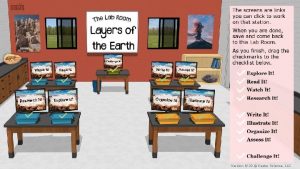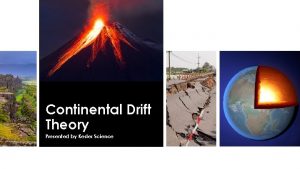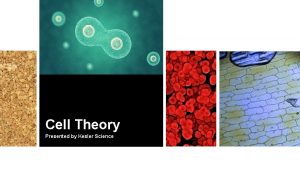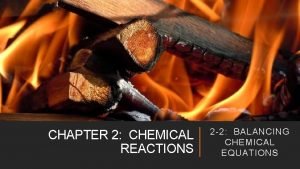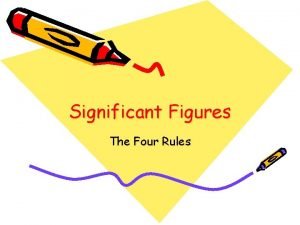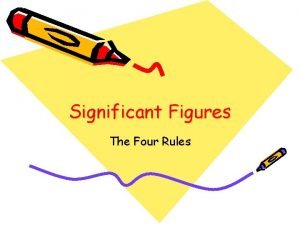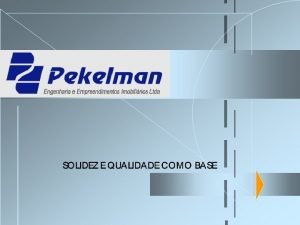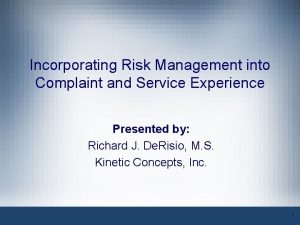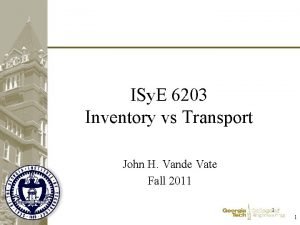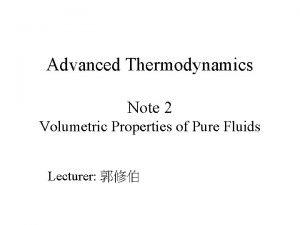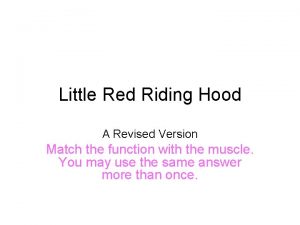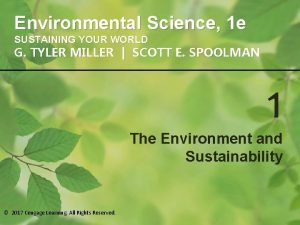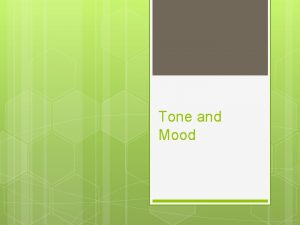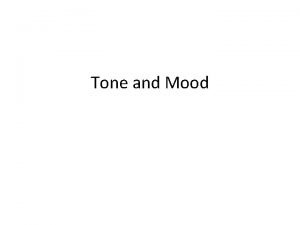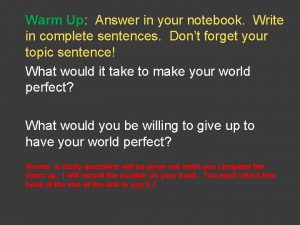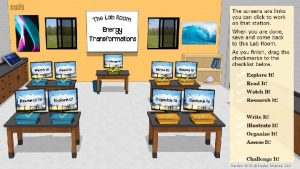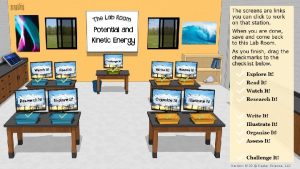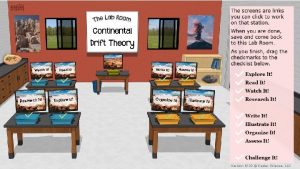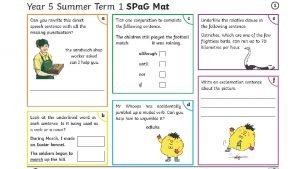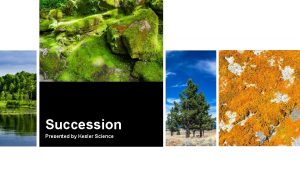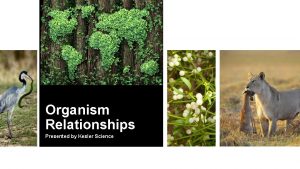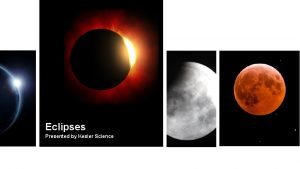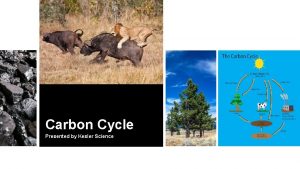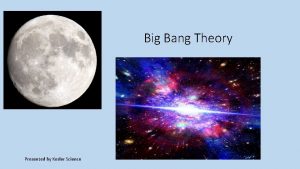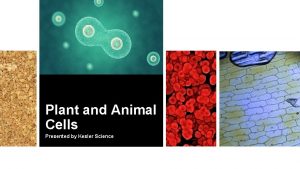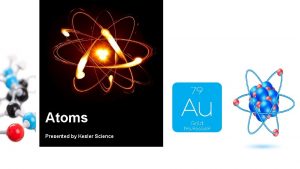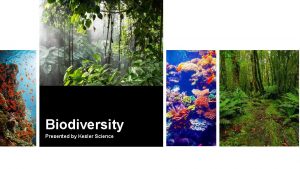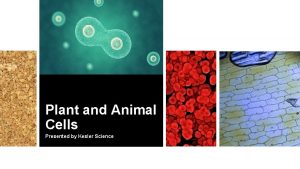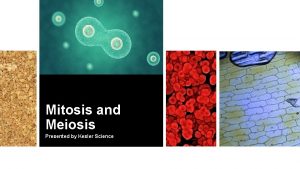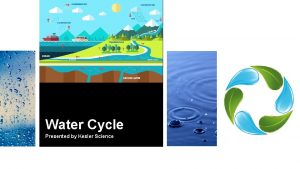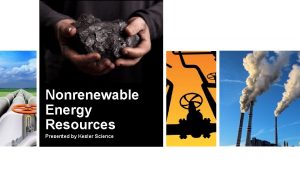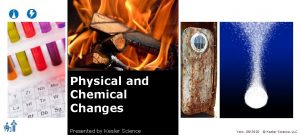Version 820 Kesler Science LLC Your Answers Watch
























- Slides: 24

Version 8/20 © Kesler Science, LLC

Your Answers: Watch It! 1. Answer here Go to this link and watch the video: 2. https: //www. youtube. com/watch? v=Wwii. Ojyfv. AU Answer here “Why Does the Earth Have Layers? ” The URL is case-sensitive. 3. Answer here Then answer these questions: 1. How far have humans been able to drill into the Earth? 2. What scientific principle causes the different layers of the Earth? 4. Answer here Is your work saved? Go Back to Lab Room 3. Which two elements are found in the inner core? 4. Solid or liquid? INPUT STATION © Kesler Science, LLC

Read Part 1. Jot down notes and drawings that will help you remember the meanings of these words. You can use the sketch/scribble button on the toolbar. Inner core Type/draw here. Outer core Type/draw here. Crust Type/draw here. Continue to Part 2 INPUT STATION Read It! The Layers of the Earth – Part 1 Below the ground you stand on, there are thousands of miles of Earth which consist of different materials, including rock, soil, rivers of water, volcanic lava, and solid iron, among other materials. There also many layers of the Earth. These layers consist of the crust, the mantle, and the core (inner and outer core). Miners are people who dig holes for a living and use specialized equipment to dig deep into the Earth. The crust is the Earth’s outer layer (what we stand on) and is made up of the oceanic and continental crust. The crust is the thinnest layer of all the layers. Below the Earth’s crust is the mantle. The upper layer of the mantle is semimolten and can flow, which allows the crustal plates to move. The heat causing the rocks to rise and fall is called convection. The mantle is also the largest layer. Earth’s core is about the size of the planet Pluto. The core is the center of the Earth and is divided into two parts – the inner core and the outer core. The core is very hot, measuring about 10, 800° Fahrenheit! The outer core is in a molten state and is found between the inner core and the mantle. The inner core is a solid ball of metal made up of nickel and iron. © Kesler Science, LLC

Read Part 2. Jot down notes and drawings that will help you remember the meanings of these words. You can use the sketch/scribble button on the toolbar. Convection Type/draw here. Seismic waves Type/draw here. INPUT STATION Read It! The Layers of the Earth – Part 2 How do scientists know hot Earth’s core is? They can’t see it. They can’t dig down deep enough to use a thermometer to measure the temperature. Despite the fact it's right under our feet, Earth’s core is inaccessible. Scientists have produced ways to study the Earth’s layers. By measuring these seismic waves, scientists can learn a lot about the composition of Earth’s layers. The layers are made up of different materials that vary in thickness. Researchers can analyze how seismic waves bounce off the boundaries between various layers and determine the composition. To learn what lies beneath the Earth’s surface, geologists use seismic waves. Earthquakes and other tectonic plate movements create seismic waves. Continue to Questions © Kesler Science, LLC

Your Answers: 1. Answer here 2. Answer here 3. Answer here INPUT STATION Read It! The Layers of the Earth – Questions 1. How do scientists know hot the core is? 3. The Earth’s core is about the size of ________. A. Thermometers A. Saturn B. Seismic waves B. Pluto C. Oil wells C. The United States D. Measure the electromagnetic spectrum D. New York City 2. What would be the best title for this passage? A. How Scientists Explore the Inside of Earth B. Details about Each of the Earth’s Layers C. Tectonic Plate Mania Is your work saved? Go Back to Lab Room D. The Rock Cycle © Kesler Science, LLC

Look at the model provided answer the questions about the layers of the Earth by clicking on each layer to read and learn about them. Explore It! Part 1 1 2 3 4 INPUT STATION Go to Part 2 © Kesler Science, LLC

Your Answers: 1. Answer here Explore It! Part 2 Layer 1 is called the Earth’s crust. It is the thinnest layer and made up of mostly granite and basalt. cr us t If you think about the outer layer of an apple, the Earth’s crust would be compared to that. 1 Crust Go Back to Part 1 or Go to Part 3 1. Do you think this the densest layer or least dense layer? Why? INPUT STATION © Kesler Science, LLC

Your Answers: 2. Answer here Explore It! Part 3 Layer 2 is called the Earth’s mantle. It is the thickest layer and made up of mostly magma, which is lava within the Earth. 2 m an tle There are convection currents in the mantle that cause the tectonic plates to move as the heat flows. Go Back to Part 1 or Go to Part 4 2. Why do you think we know very little about the mantle? INPUT STATION © Kesler Science, LLC

Your Answers: 3. Answer here Explore It! Part 4 Layer 3 is called the Earth’s outer core. It is made up of mostly liquid Iron and Nickel. Scientists believe the magnetic field properties of the Earth are caused by this layer of the Earth. 3 out erco re Go Back to Part 1 or Go to Part 5 3. Why do you think the outer core is liquid and the inner core is solid? INPUT STATION © Kesler Science, LLC

Your Answers: 4. Answer here Explore It! Part 5 Layer 4 is called the Earth’s inner core. It is made up of mostly solid Iron and Nickel. It is the Earth’s densest layer. Even though it’s as hot as the surface of the Sun, it is solid. ner 4 in core Is your work saved? Go Back to Part 1 or Go Back to Lab Room 4. How do you think scientists are able to study the center of the Earth? INPUT STATION © Kesler Science, LLC

Your Answers: 1. Answer here Research It! Go to “Dynamic Earth Interactive” https: //www. learner. org/series/interactive-dynamic-earth/ 2. Answer here 3. Answer here 4. Answer here Read about each of the Earth’s layers and answers the questions. 1. What did geologists study in the early 1900 s to learn more about the earth’s layers? 2. Click on the crust. What are some characteristics of the earth’s crust? 3. What are the two regions of the mantle? 4. Which region of the mantle is denser? 5. Answer here 6. Answer here Is your work saved? Go Back to Lab Room 5. What is unique about the outer core? 6. What two elements are the outer core mostly made of? INPUT STATION © Kesler Science, LLC

Made up of mostly solid Iron and Nickel Composed of mostly granite and basalt OUTPUT STATION Organize It! Made up of mostly liquid iron and nickel Made up of mostly magma Match the property cards with the correct layer of the Earth. Place the layers of the Earth cards in order from outside (top) to inside (bottom. ) outermost layer The densest layer of the Earth Contains convection currents that move the tectonic plates Thinnest layer of the Earth Inner Core Earth’s Crust Mantle Outer Core innermost layer Is your work saved? Go Back to Lab Room © Kesler Science, LLC

Sketch the diagram on your page and label each of the layers. You DO NOT need to draw the continents. See the next page for help on inserting pictures into the page. Go to Image Help OUTPUT STATION Illustrate It!

OUTPUT STATION Illustrate It! There are several ways to get images into these pages. 1. Draw on your own paper. Take a picture and upload that picture to this device, OR, 2. Draw with an app. Open Google Draw, Paint, or any other graphics app. Draw your image, then either take a screenshot or picture of your image. For either option, go to the “Insert” menu on the upper left corner and choose “Pictures. ” Is your work saved? Go to Illustrate It! or Go Back to Lab Room Select “This Device” and browse to the folder where you saved the picture. Click on the file name and click “Insert. ”

Write It! Question 1 Why does the Earth have different layers? Answer here OUTPUT STATION Go to Question 2 © Kesler Science, LLC

Write It! Question 2 List the layers of the Earth and provide a short description of each layer, starting with the center of the Earth. Answer here OUTPUT STATION Go to Question 3 © Kesler Science, LLC

Write It! Question 3 How is density related to the layers of the Earth? Is your work saved? Go Back to Lab Room Answer here OUTPUT STATION © Kesler Science, LLC

Your Answers: 1. Answer here 2. Answer here 3. Answer here Assess It! Part 1 1. Put the layers of Earth in order from densest to least dense. A. Crust, Mantle, Inner core, Outer core B. Inner core, Mantle, Outer core, Crust C. Crust, Mantle, Outer core, Inner core D. Inner core, Outer core, Mantle, Crust 2. Which layer plays the greatest role in the movement of tectonic plates? A. Crust B. Mantle C. Outer Core D. Inner Core 3. Which two elements are mainly found in the inner and outer core? Go to Part 2 A. Fe and Ni B. Fe and Si C. Ni and Si D. Ni and C OUTPUT STATION © Kesler Science, LLC

Your Answers: Assess It! Part 2 4. Answer here 5. Answer here 6. Answer here 7. Answer here 8. Answer here Use the vocabulary words from “Read It” to complete the following sentences. The interior of the Earth has different layers. At the center the solid ball of nickel and iron is called the (4)_____. Just outside that layer of the Earth is a layer in a molten state that we call the (5)_____. Moving further towards the outermost layer of the Earth, or the (6)_____, we find that the mantle is semi-molten. The hot material rises, cools, and then sinks in a cyclical process called (7)_____. When the slabs of rock that lie on the mantle interact with each other, (8)_____ are produced from earthquakes and other tectonic movements. These can be destructive to the surrounding environment. OUTPUT STATION Is your work saved? Go Back to Lab Room © Kesler Science, LLC

BONUS STATION Challenge It! All other stations must be completed before you begin this station. Choose one or more of the activities below. Click on the word to go to the page for that activity. DEMONSTRATE BROCHURE CROSSWORD WRITE Is your work saved? Go Back to Lab Room © Kesler Science, LLC

DEMONSTRATE YOUR UNDERSTANDING BONUS STATION Challenge It! Create your own diagram, artwork, or model of the layers of the Earth. Insert a picture of your work here. Be as creative as you want to show the layers and their relative thicknesses. 1. Draw on your own paper. Take a picture and upload that picture to this device, OR, There are several ways to get images into these pages. 2. Draw with Google Draw, Paint, or any other graphics app. Draw your image, then take a screenshot or a photo of your image. Once your picture is saved, go to the “Insert” menu in the upper left corner and choose “Pictures. ” Is your work saved? Go Back to Challenges or Go Back to Lab Room Select “This Device” and browse to the folder where you saved the picture. Click on the file name and click “Insert. ” © Kesler Science, LLC

TRAVEL BROCHURE Imagine a trip to the center of the Earth. Using the internet (or even this station lab) for research, create a travel brochure that includes the layers, their relative thicknesses, their compositions, and anything else you think is important. Is your work saved? Go Back to Challenges or Go Back to Lab Room BONUS STATION Challenge It! Insert a link or a picture of your brochure here. There are several ways to get images into these pages. 1. Create the brochure on your own paper. Take a picture and upload that picture to this device, OR, Once your picture is saved, go to the “Insert” menu in the upper left corner and choose “Pictures. ” 2. Create your brochure on a Google Doc and link your document here. Select “This Device” and browse to the folder where you saved the picture. Click on the file name and click “Insert. ” © Kesler Science, LLC

CROSSWORD Create a crossword puzzle using at least 10 vocabulary words learned from this station lab. Be sure to include a key! BONUS STATION Challenge It! Insert a picture of your crossword here. There are several ways to get images into these pages. 1. Draw on your own paper. Take a picture and upload that picture to this device, OR, 2. Use a crossword app. Create your crossword, then take a screenshot or a photo of your image. 3. Use the website: https: //tools. atozteacherstuff. com/free-printablecrossword-puzzle-maker/ Create your crossword and then save your work. Is your work saved? Go Back to Challenges or Go Back to Lab Room Once your picture is saved, go to the “Insert” menu in the upper left corner and choose “Pictures. ” Select “This Device” and browse to the folder where you saved the picture. Click on the file name and click “Insert. ” © Kesler Science, LLC

WRITE A STORY Imagine you are a piece of rock. Write a story about how this rock might travel through the layers of the Earth. Describe what the rock would experience in each layer. You should use at least 5 complete sentences. Is your work saved? Go Back to Challenges or Go Back to Lab Room BONUS STATION Challenge It! Insert a link or a picture of your story here. There are several ways to get images into these pages. 1. Write your story on your own paper. Take a picture and upload that picture to this device, OR, Once your picture is saved, go to the “Insert” menu in the upper left corner and choose “Pictures. ” 2. Type your story on a Google Doc and link your document here. Select “This Device” and browse to the folder where you saved the picture. Click on the file name and click “Insert. ” © Kesler Science, LLC
 Kesler science mitosis and meiosis answer key
Kesler science mitosis and meiosis answer key Kesler science rock cycle answer key
Kesler science rock cycle answer key Kesler science
Kesler science Kesler science plate boundaries
Kesler science plate boundaries Kesler science
Kesler science Kesler science balancing chemical equations
Kesler science balancing chemical equations Liquids and solids
Liquids and solids 820 m significant figures
820 m significant figures Fluke 820 2
Fluke 820 2 Trapped zeros
Trapped zeros 075 lic plan
075 lic plan Rua diana 820
Rua diana 820 21cfr820.198
21cfr820.198 Isy inventory
Isy inventory Advanced thermodynamics
Advanced thermodynamics Lee kesler equation
Lee kesler equation What are your favorite subjects
What are your favorite subjects A revised version of little red riding hood
A revised version of little red riding hood Ipat model of environmental impact
Ipat model of environmental impact In your notebook write questions and answers about yourself
In your notebook write questions and answers about yourself Give us your hungry your tired your poor
Give us your hungry your tired your poor I'd rather stay here and wait than go into that dark room
I'd rather stay here and wait than go into that dark room Tones of sentences
Tones of sentences Write complete sentences in your notebook
Write complete sentences in your notebook Citlearn
Citlearn
